Pale Memory: Time and a Vanished Life
The Pale Memory," by video artist John Merigliano and composer Justin Rubin, was made for the Time Symposium, an ongoing project of the Institute for Advanced Study at the University of Minnesota. See it today in Minneapolis or Tuesday in Duluth.
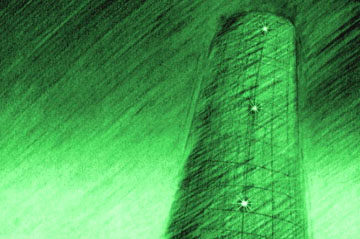
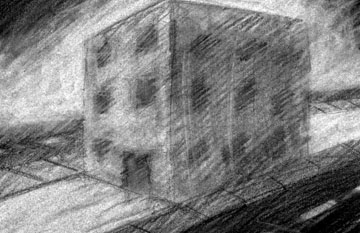
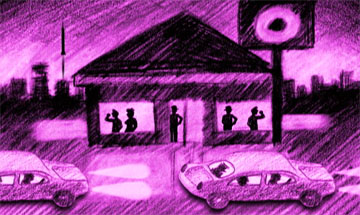
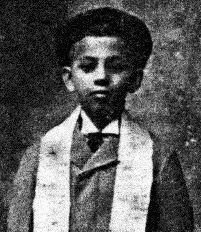
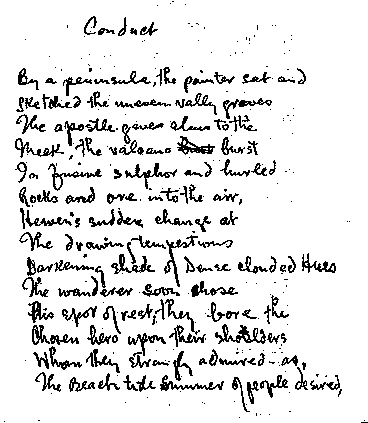
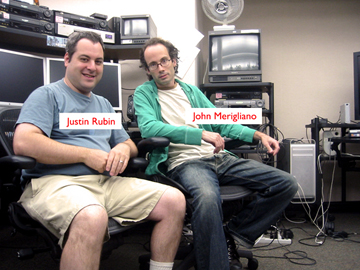
“The Poetry of Time and the Disorientation of Memory,” a presentation of the multimedia work “The Pale Memory,” will occur Monday at 4:00 p.m., 125 Nolte Center, University of Minnesota-Minneapolis, and Tuesday, 1:00 p.m., Singer Rehearsal Hall, 206 Weber Music Hall, Universty of Minnesota-Duluth. Free.
Justin Rubin is sitting in his small office on the University of Minnesota-Duluth campus, shared by a Steinway and a computer. He’s between classes and in the midst of preparations to show his latest work in Minneapolis at the Time Symposium.
What is this piece?
It’s an animation and composition based on the works of Samuel Greenberg, a very obscure poet who died in 1917 in a charity hospital in New York. He was completely unknown during his lifetime. He lived on the lower East Side in poverty, his father always working. His mother had died when he was a young child. Apparently he was passed from brother to brother, working, until he died of TB in his early twenties.
He went to school for a while but left at 14 to work. He didn’t have literary training, he had whatever he could pick up from books owned by his brothers, mostly early nineteenth century stuff, like Keats, so a lot of his diction is very ‘poetic.’ Oldfashioned.
After he died all his work was kept in a big box. One of his brothers had it, finally he could’t keep it, and he passed the box on to someone in upstate New York , a bookbinder, someone interested in books. He assembled some of the works in an edition that he printed. Hart Crane had read some of the pieces and encouraged him to do this.
Did Greenberg know what would happen to him?
In a letter he wrote to one of his brothers he wrote, “I know I ‘m going to die in this hospital, and I know I’m never going to experience most of life, so in this poetry I’m trying to imagine what it would be like.” So instead of writing from experience he wrote his experience. Instead of writing from life he wrote a life, he wrote a world.
He knew he was going to die, so he wrote very fast. The grammar . . . it’s hard to understand even sometimes. But there’ll be a three- or four-word phrase that just blossoms out, it grabs you, you think, “this is genius, right here.”
I’ve used his work over the years but always in very traditional ways, like settings for voice and piano, but this is very different. His poem isn’t even in this piece, it’s the source of it but it’s not in it. It was an inspiration for the film.
How do you use this work to represent Time?
We chose one poem he wrote, “The Pale Impromptu”,,,,,there’ll be a stanza of 4 lines, quite regular, and then a riff of a series of short lines spilling down the page, little fragments. A lyrical section and then all of a sudden, a series of broken phrases . . .
This got me thinking about how we experience works of art in time—through memory. How do we connect this with music? Though themes, like in Wagner there’ll be theme whenever a particular character comes on. . . .
And John and I started thinking about disassociation, kind of like the memory matching game, where you turn over a card and try to find the match for it. The poem is discontinuous, not a narrative. It looks like a structure, the words are laid out on the page to create a regular structure of lyrical stanza and then this diagonal spill of fragments.
How does the animation correspond to the poem you are referencing?
The animation is composed of lyrical one-minute moments, based on something from the poem, in color; then there’s a series of dissociated black and white stills taken from the several animations, flashing by . . .
We use the structure of the poem, and some of the imagery, but not in literal ways, it’s evocative and melancholy. It’s a work based on the idea of Time, about a writer who didn’t have time, he ran out of time.
Some of the animations represent a sort of ‘50s style landscape. One has a rocket emerging from the city, like a history of the idea of the future, a melancholy idea.
We’re presenting it now just as a ten-minute piece, but we’d like to have it as an installation, looped, so you could just walk in on it at any time during the animation.
So the symposium on the subject of Time has continued for two years, with presentations every week (every Thursday and most weekends), presentations open to the public?
Yes, it’s a project that’s funded by the University, the Institute for Advanced Study, people who teach at the University can apply for funds to develop their proposals for time-relevant projects.
If you’re interested in the Time Symposium, see the website below. Presentations are open to the public and range across many disciplines, from the arts to sciences to philosophy and beyond.